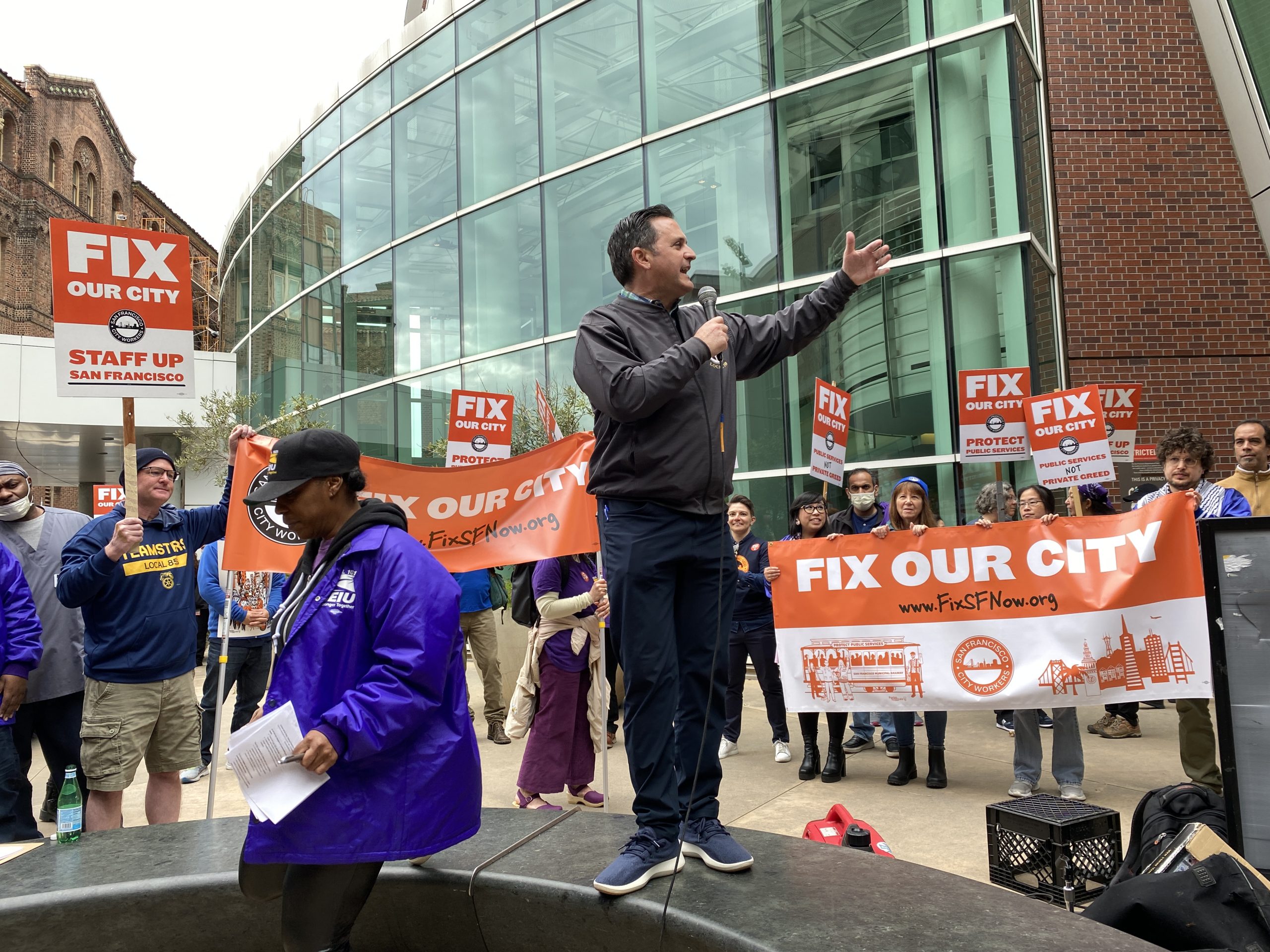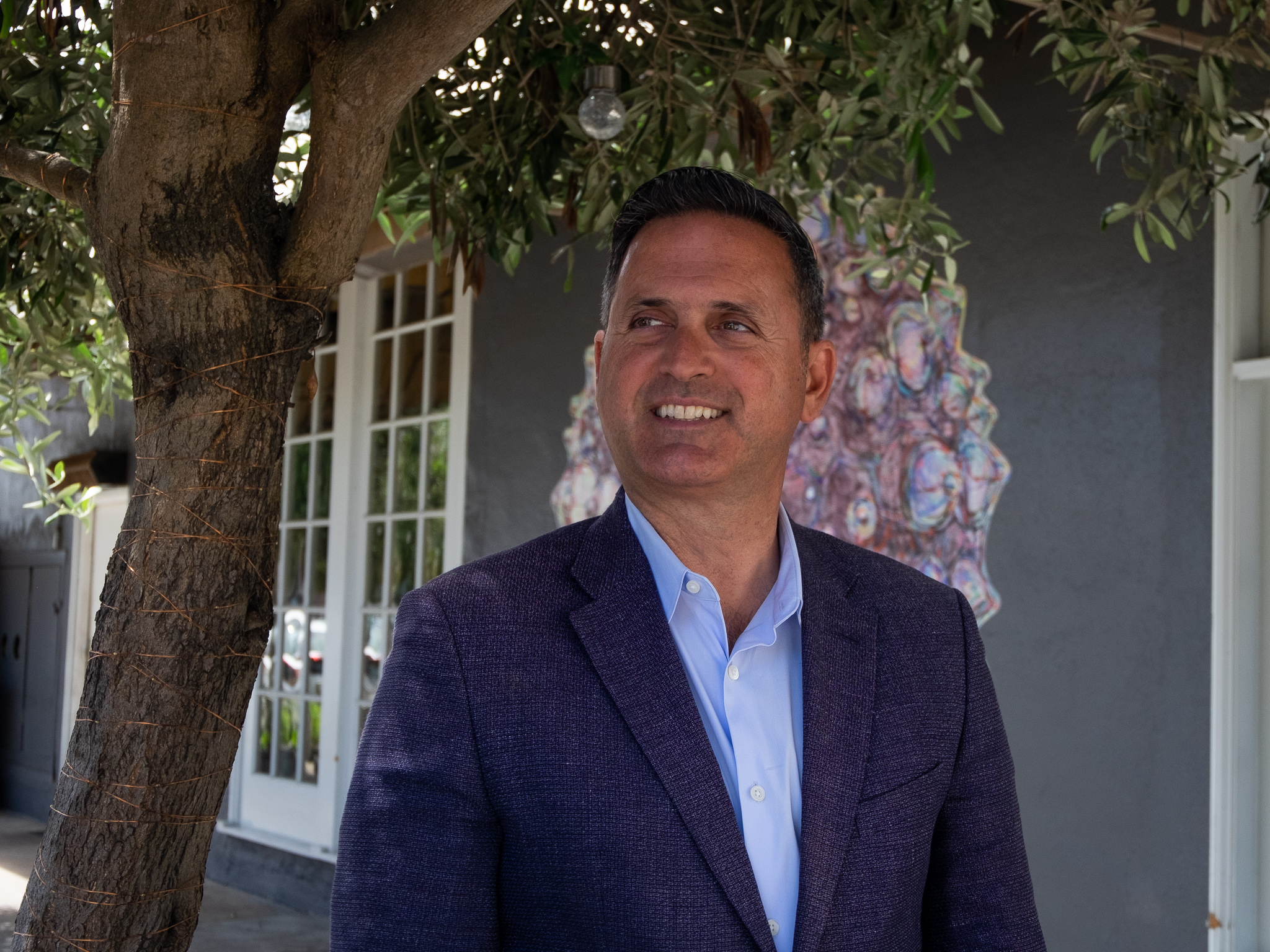[ad_1]
On Tuesday evening, Ahsha Safaí, the District 11 supervisor and mayoral candidate, was at a small event with architects at the William Duff Architects firm — an audience, more or less of his peers, for the MIT-trained city planner.
After a longer-than-expected Board of Supervisors meeting, Safaí arrived at the firm’s kitchen around 6 p.m., about half an hour behind schedule. There was sparkling water, cashews in paper cones and a bottle of Excelsior wine — a fitting vintage for the Excelsior supervisor.
Since the start of the year, the architectural firm has invited all leading mayoral candidates for a meet-and-greet, and this was the last. The firm, on Folsom and 9th streets, is located in a space transformed from a previous carpet store, with high wooden ceilings and a living tree growing in its center.
It was evident from the beginning that Safaí was a good fit — the architects were impressed by the MIT planning degree. As Safaí talked through his past experience, he took more time than usual to talk about the 3,000 trees he planted in his district. “If I had not done that, our urban canopy would have been in the negative,” Safaí said. The audience nodded in agreement.
Safaí continued, promising to plant at least 40,000 trees in his first term in office and to focus on urban greening, changing rooftops into green spaces, and creating more urban canopy, “one of the best ways we can offset our carbon footprint,” he said.
“If you were to dream, what can the city do to make itself the city for the next 50 years, from an urban planning perspective?” asked William Duff, founder of the architecture firm.
The short answer: a much improved subway system. He noted that world class cities — like London, Paris and New York — are easy to traverse.
Taking a page from best practices, he pointed to the need for underground lines connecting downtown to Geary Boulevard through Ocean Beach, on 19th Avenue and to Crissy Field. This, he said, “would open up a lot more neighborhoods and make them more accessible.”
Another “best-practice” solution: to bring public universities downtown. But it comes back to “clean and safe” too, Safaí said, mentioning his plan for “proactive community policing” — something all leading mayoral candidates have proposed — and making Public Works “a true 24-hour department.”

The most enthusiastic discussion came after the formal Q&A where everyone gathered in a circle for a more relaxed conversation.
Someone brought up rent control, questioning if it’s a long-term solution for affordability and vibrancy of the city. In November, California voters will decide on Proposition 33, a state measure that would allow cities to expand rent control to any type of housing, including single-family homes and new apartments.
To that, Safaí first noted the need to expand housing production and make housing more affordable for middle-class families. He then stood his ground supporting rent control.
Safaí gave an example of a building in District 11, built in 1990 — it was sold with a selling point that it wasn’t covered by rent control. As a result, rents increased, and 26 long-time tenants, including families, were displaced.
Although rent control isn’t going to solve the housing prices, “it solves people from being displaced,” Safaí said. “And without that, you see a significant number of people being displaced from their current housing.”
[ad_2]
Source: missionlocal.org






